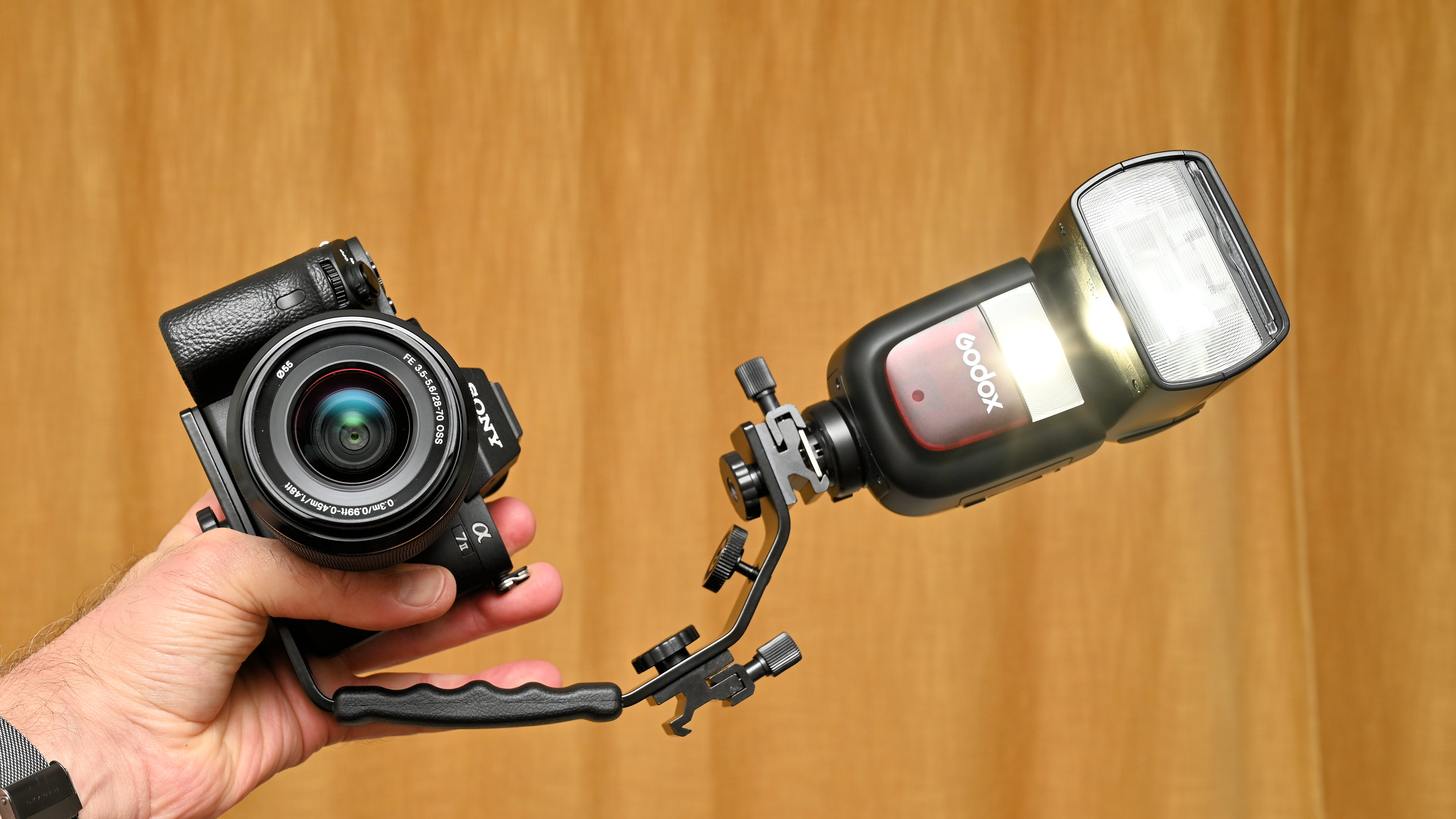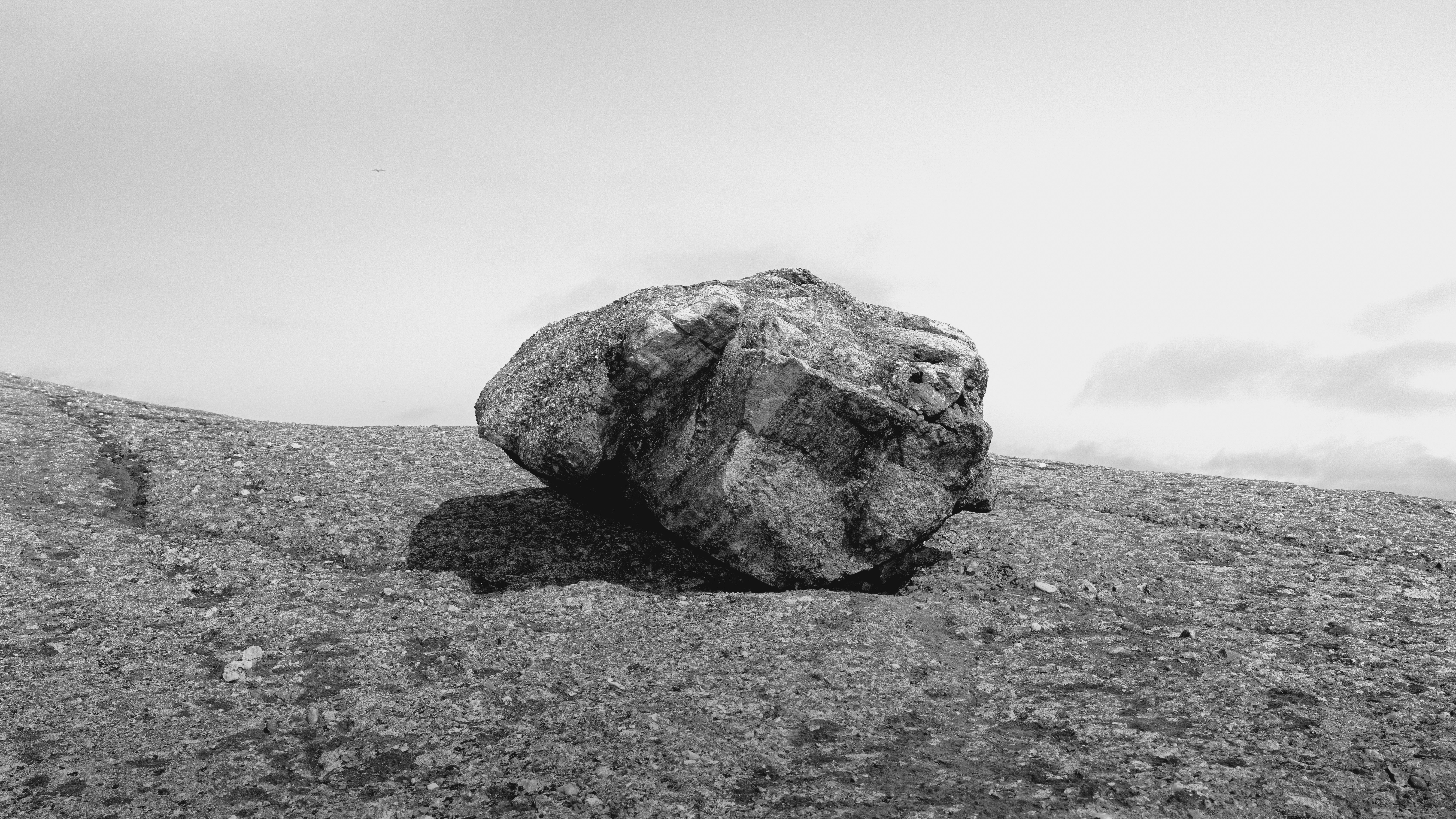Best L-brackets for your camera in 2025: take horizontal and vertical shots with ease
With the best L-bracket, you can switch between perfectly aligned landscape and portrait-orientation compositions in seconds
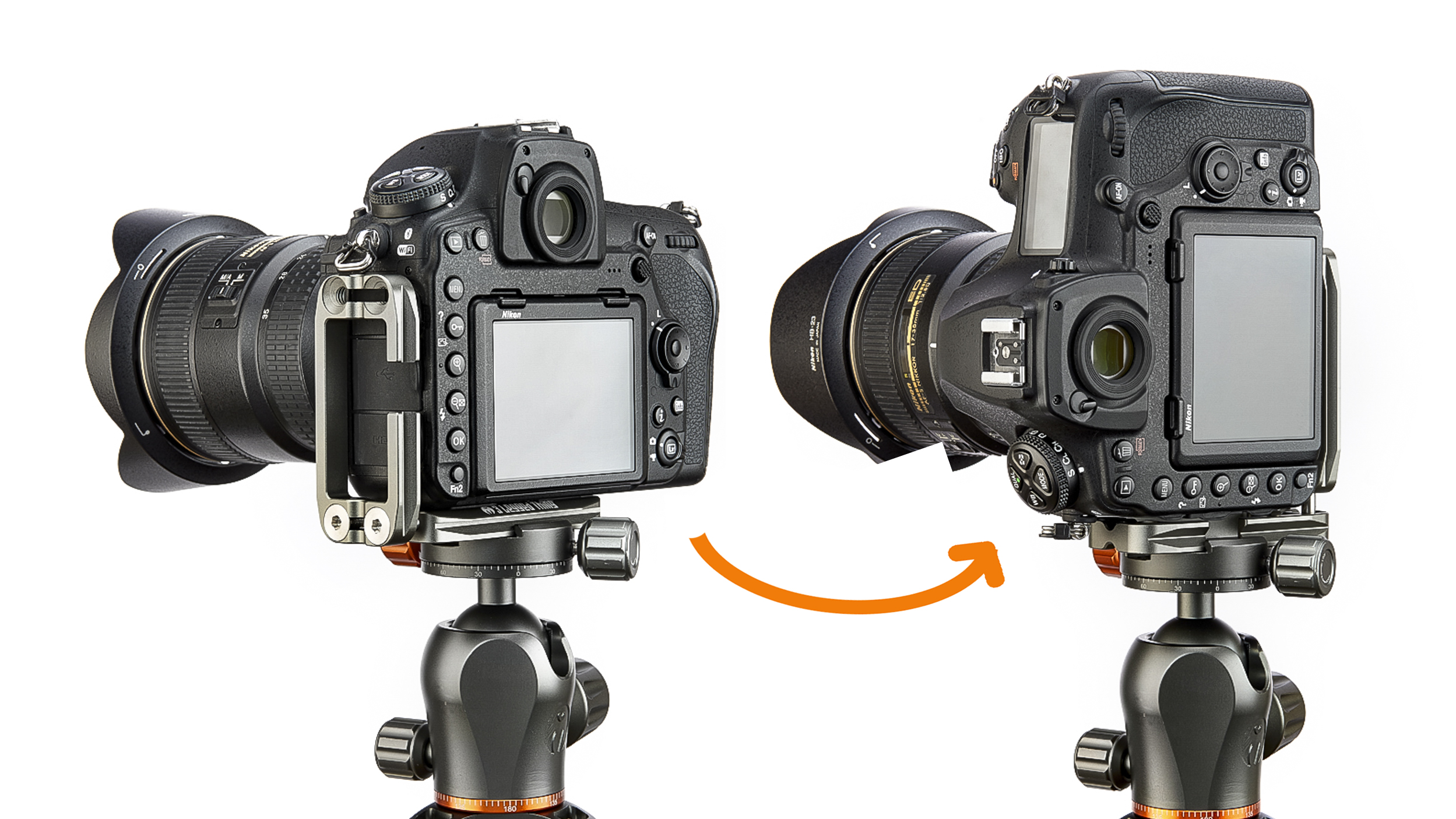
We all know the value of using a tripod for shooting landscapes. Not only does it keep your camera rock-steady through the duration of an exposure, but it’s also a vital composition aid. It enables you to carefully compose your scene, then wait for just the right moment before firing the shutter. Jobbing pros also know that to maximize the sales potential of their shots, they have to shoot in both landscape and portrait orientations, so that their images are equally suitable for magazine or brochure spreads and covers.
However, tripods are primarily designed for shooting horizontally. While most tripod heads can be tilted by 90 degrees to flip the camera into a vertical orientation, this shifts the camera's position to the side of – and often below – the original shooting position, so your carefully considered composition needs to be redone from scratch. It also shifts the centre of gravity from directly above the tripod legs to one side, potentially destabilizing the entire setup.
An L-bracket is a camera plate that wraps around the camera in an L-shape, with the tripod mount running underneath and to the side of the camera. To change the shooting orientation from horizontal to vertical, you pop the camera off the tripod and remount it using the socket on its side. It takes mere seconds to change composition, which can make or break a shot if timing for the right light is critical.
On the face of it, an L-bracket is simply a right-angled piece of metal – but, as ever, there’s a little more to it than that. Let’s check out the L-bracket options…
The Quick List

Custom-made to fit the Z7 II, Z6 II, and Z5 perfectly, and there are loads of other custom-fit options for other cameras, too.
Read more below

More akin to a telephoto lens tripod collar, it's even quicker to switch orientations than an L-bracket, once you've set it up.
Read more below
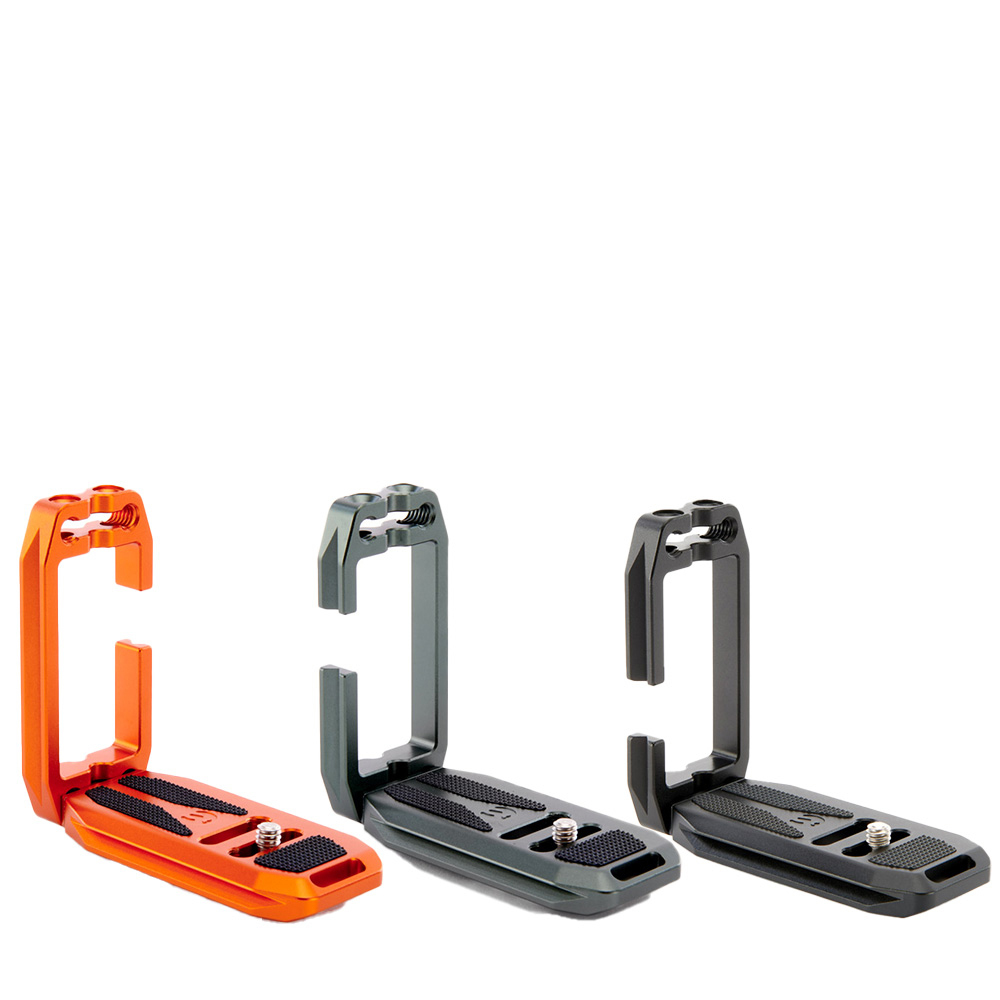
Adjusts to fit the majority of small and mid-sized mirrorless cameras, and is well priced too.
Read more below
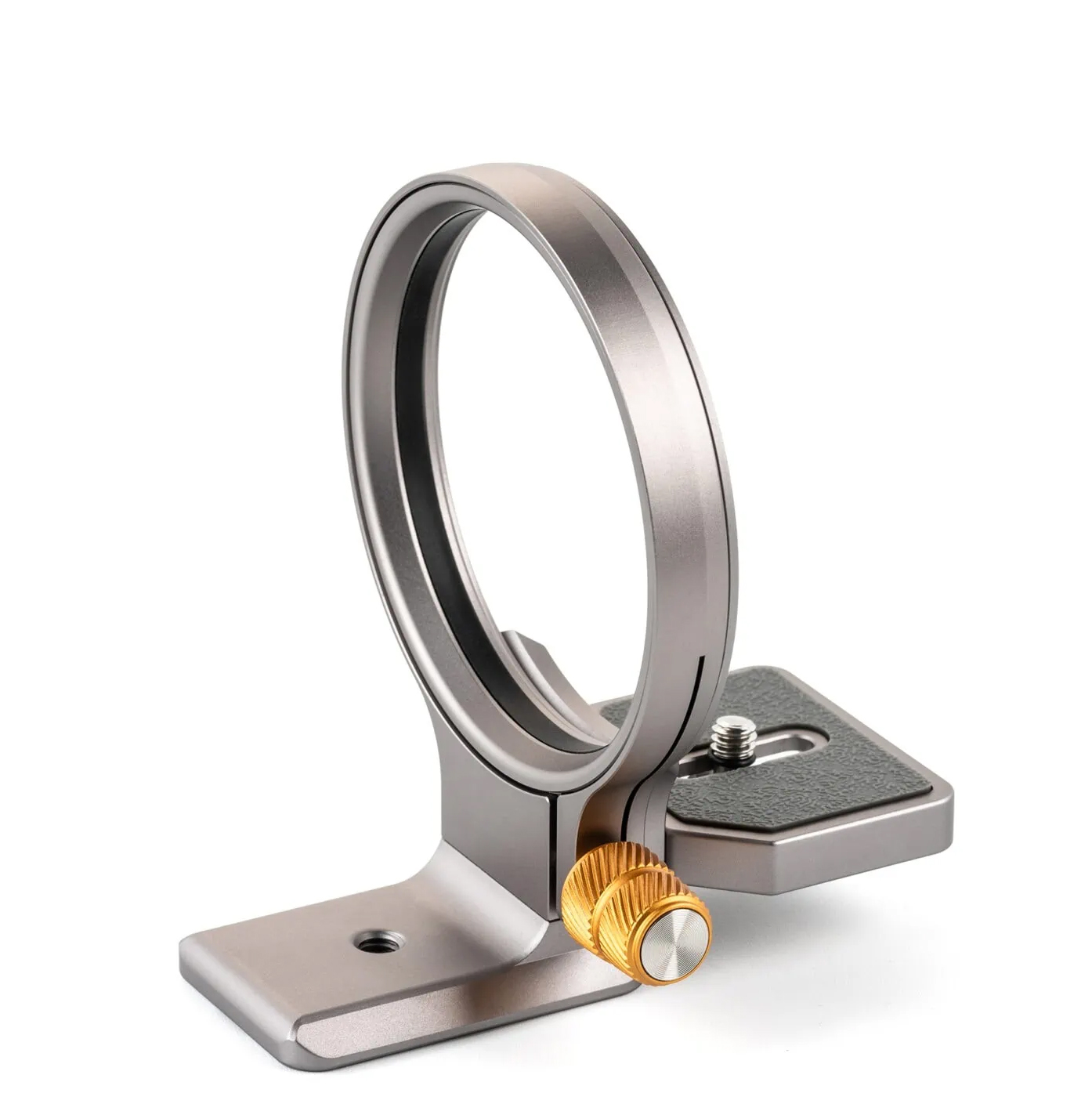
This versatile ring-mount design is even quicker to switch orientations than a regular L-bracket.
Read more below
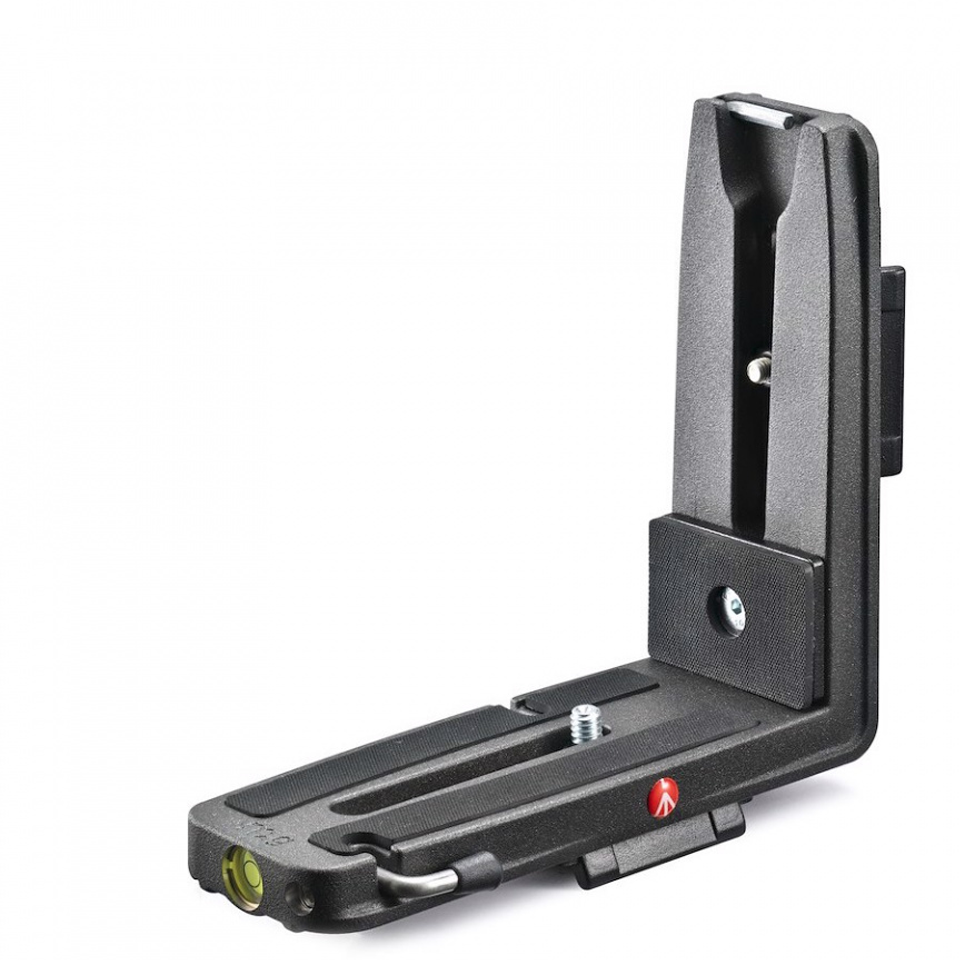
An oversized 'universal' bracket, this is best-suited to larger pro DSLR and mirrorless cameras with chunky grips.
Read more below

Not a traditional L-bracket, but a simple grip for attaching accessories to your camera and best-suited to video.
Read more below
The best L-bracket for your camera
Why you can trust Digital Camera World
Best custom-fit L-bracket
Specifications
Reasons to buy
Reasons to avoid
The Zelda QD is a custom-fit bracket for the Nikon Z5, Z6, Z6 II, Z7, and Z7 II mirrorless cameras, as their form factors are virtually identical. But don't worry if you don't own one of these models; 3 Legged Thing has a range of custom-fit brackets tailor-made for other Nikon, Canon, Sony, Fujifilm, and Olympus cameras, so chances are there's one made specifically for your camera. The Nikon Z50 has the Zayla, the Z8 gets the Zooey QD, the Z9 has the Zaara QD, and the Nikon Z5 II and Z6 III get the Zadie, There’s also the Alfie and Arnie QD for various Sony Alpha cameras, the Riley QD for the Canon EOS R7, the Roxie QD for Canon EOS R5, R5C, R6 and R6 Mark II, the Freya for the Fujifilm X-T5, Gracy for Fujifilm GFX100S and 50S II, and the Ollie QD for the OM System OM-1.
The important thing is that they all fit their host cameras just as snugly, so you can apply the general points about the Zelda QD here to these other L-brackets. The 'QD' versions are updates to the original models, but with the addition of a quick-detach socket and compatibility with Peak Design Capture Clips.
Unlike universal aluminum brackets, these are crafted from a single piece of metal; with no joins, there shouldn’t be any danger of the right angle sagging over time. The camera connection screw doesn’t slide along the frame but is fixed in exactly the right place; a notch next to it slips into a recess on the underside of the host camera, ensuring it is perfectly lined up. The open side plate is designed to fit the ports of the host camera precisely, and the battery door is unobscured. There’s also a screw hole for attaching accessories. It fits its host camera so well that it’s the obvious choice if you own any one of these mirrorless machines.
The downside is, of course, that it won’t fit any other camera you might have – now or in the future, so if you upgrade to a new camera, you'll have to splash out on a new L-bracket too.
See our full 3 Legged Thing Zelda QD review
Best L-bracket alternative
Specifications
Reasons to buy
Reasons to avoid
The Benro QRB95Dual Quick Rotation Lens Bracket is an interesting alternative to a traditional L-bracket. It feels more like a tripod collar that you’d typically find on larger telephoto lenses, but adapted for a wider range of lenses and camera bodies. The main appeal is the promise of quick switching between landscape and portrait orientations without having to remount the camera or significantly adjust the tripod head.
The rotation mechanism is smooth. A simple twist of the lock/release lever allows the camera to be rotated within the bracket, which is much quicker than fumbling with an L-bracket’s release clamps. The build quality is also impressive; the components are precision-engineered from aluminum and have a smart gunmetal gray finish, feeling very robust.
Setting it up initially is a bit fiddly, as you need to ensure that the lens is perfectly centered within the rotation bracket. This is crucial because if it's off-center, the composition will shift as you rotate the camera, which kind of negates one of the key benefits. But once set up, using it is pretty straightforward. It definitely speeds up the process of changing orientation. It’s not a complete replacement for a traditional L-bracket in all scenarios, but it offers a different, and in some ways more fluid, shooting experience.
See our full Benro QRB95Dual Quick Rotation Lens Bracket review
Best universal L-bracket
Specifications
Reasons to buy
Reasons to avoid
3 Legged Thing’s Lexie is an Arca-Swiss compatible L-bracket, with a modular construction that makes it suitable for use on many cameras - and more than its predessor the Ellie. It’s available in Copper, Metallic Slate Grey or Darkness (matte black), and is made from anodised aerospace-grade magnesium alloy, with a 1/4-inch-20 stainless steel Stagsden screw to mount it on a camera. There are also four 1/4-inch-20 threads (two in the upright plate and two in the base plate) for attaching accessories such as a light, accessory arm or monitor.
3 Legged Thing supplies the two plates of the Lexie unconnected, so the first step in using it is to slot them together and tighten the bolts before adjusting the length of the horizontal plate (if necessary) to fit your camera. This means using the tiny hex key supplied in the box, which is a little fiddly.
With this done, it should be possible to mount the camera on an Arca-Swiss-type tripod head, in either portrait or landscape orientation, without shifting the focal plane and while keeping the centre point of the camera directly above the tripod for maximum stability.
Understandably, being a Universal L-Bracket, the Lexie may not fit as snugly as a bracket that’s designed for a specific camera, but it costs much less and has the big bonus of being transferable.
See our full 3 Legged Thing Lexie review
Best ring bracket
Specifications
Reasons to buy
Reasons to avoid
The NiSi Wizard Camera Bracket is rather different from a regular L-bracket. Here, the camera mounting plate sits within a circular ring that can be freely rotated within a fixed circular mount that attaches to the tripod. As such, switching from landscape to portrait orientation is even quicker than using an L-bracket; rather than physically removing the camera from the tripod to reorientate it, you simply unlock the inner ring via a knob, rotate the whole shebang, and lock it again, the whole operation taking a fraction of a second – useful when time is of the essence, such as shooting a rapidly disappearing sunset.
While there are 90-degree click-stops to make getting the camera level in other orientations easy, you can also shoot off kilter, should you wish, for the 'Dutch tilt' look, or even upside down – ideal for low-level shooting when the camera is suspended below the tripod.
There are several different-sized versions, ranging from 63mm to 82mm in diameter, depending on your preferred camera/lens combo, so it isn't quite the one-size-fits-all solution of a 'universal' L-bracket. The downside of the ring design is that it can obscure Function buttons with some cameras and lenses, and block vari-angle screens in portrait orientation when using cameras that have a handgrip.
See our full NiSi Wizard Camera Bracket review
Best for large cameras
Specifications
Reasons to buy
Reasons to avoid
By far the most substantial bracket here, Manfrotto’s Q2 is a one-piece design and is constructed from magnesium. While most other brackets come with an Arca Swiss fitting, the Q2 is compatible with Manfrotto’s 200PL-14 quick-release plate; Arca Swiss plates slide along the length into a tripod mount, while this clicks into a fixed position on the tripod head. Further variations are the RC4, fitted with 410PL plates, and the Q5, which uses 501PL plates.
The Q2 comes with a Y-shaped ruler to measure the distance between the lens barrel and plate; the idea is you set the same distance between the lens and both the base and side plates, so the center of the lens is perfectly lined up in both portrait and landscape orientation. Other features include a level bubble, and a pullout peg to prevent the camera from rotating.
The Q2 dwarfed all my mirrorless cameras to the point of being difficult to use the controls. This bracket is really designed for the squarer shape of bigger pro-grade cameras that have an oversized built-in grip, or when a battery grip is fitted to the camera.
See our full Manfrotto Q2 review
Best for video
Specifications
Reasons to buy
Reasons to avoid
It may be marketed as an L-bracket, but the Chromlives Camera L-Bracket Mount Video Grip offers quite a different take on the traditional L-bracket. Instead of focusing on tripod mounting, it's all about enhancing the handheld shooting experience, particularly for video, with a sculpted handgrip designed to offer a more secure and comfortable hold for your camera.
There are a pair of robust metal cold shoes that come with clamping mechanisms and locking screws, for firmly attaching flashguns, external microphones, LED panels and the like without worrying about them falling off. This is a bonus for run-and-gun videography, where you need a compact and reliable setup.
While it’s not designed for quick portrait/landscape switching on a tripod like other L-brackets, that’s not its intended purpose. Its strength lies in providing a solid grip and convenient mounting points for accessories when shooting handheld. It's well-made, especially considering its price point. If you’re looking for a way to improve your handheld stability and add essential accessories to your camera rig, the Chromlives Camera L-Bracket is worth considering. It’s just not an 'L-bracket' in the conventional sense, but it offers a practical and affordable solution for those specific needs.
See our full Chromlives Camera L-Bracket Mount Video Grip review
L-bracket: things to look out for
1. A universal bracket offers flexibility to upgrade your camera, but a custom-fit bracket ensures a perfect fit.
2. Most L-brackets are Arca Swiss-compatible: if your tripod head doesn’t have this mount, it won’t fit.
3. Designs that enable you to access the battery door are handy should you run out of juice mid-shoot.
4. Some brackets obscure the connection ports, which may be a problem if you like to shoot tethered. It may be preferable to use a wireless remote, rather than a cable release.
5. An L-bracket often obstructs the battery compartment of the camera – insert fully charged batteries before you attach the bracket to save you time disassembling the setup during your shoot.
6. Take advantage of your bracket and don’t move the head once it’s level (excluding pivot functions). Adjust the legs if you need to re-level your camera.
7. Rubber strips on the base plate prevent scratches and scrapes on the underside of your camera.
8. Larger lenses often come packaged with a rotatable lens collar, fitted with a tripod screwthread. This is a better option to an L-bracket for these front-heavy setups as it reduces strain on the lens mount.
The best camera deals, reviews, product advice, and unmissable photography news, direct to your inbox!
Matthew Richards is a photographer and journalist who has spent years using and reviewing all manner of photo gear. He is Digital Camera World's principal lens reviewer – and has tested more primes and zooms than most people have had hot dinners!
His expertise with equipment doesn’t end there, though. He is also an encyclopedia when it comes to all manner of cameras, camera holsters and bags, flashguns, tripods and heads, printers, papers and inks, and just about anything imaging-related.
In an earlier life he was a broadcast engineer at the BBC, as well as a former editor of PC Guide.
- Adam WaringGuides Editor







